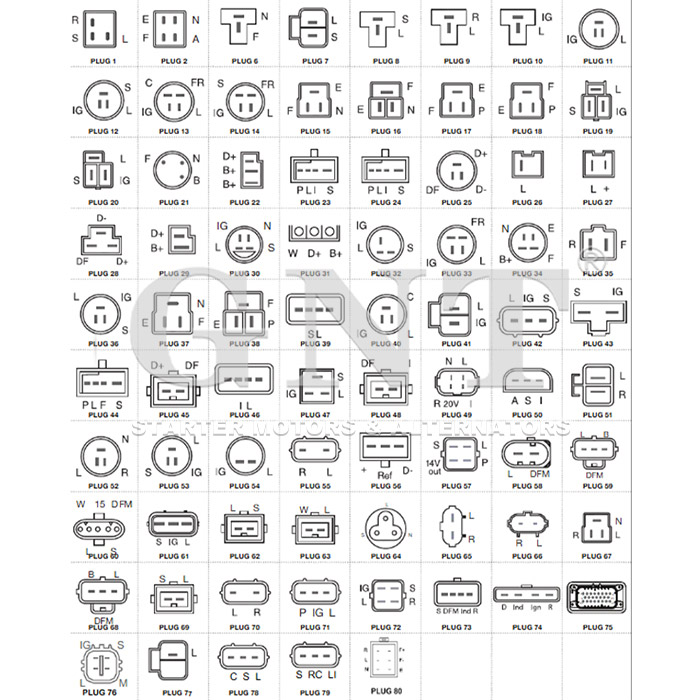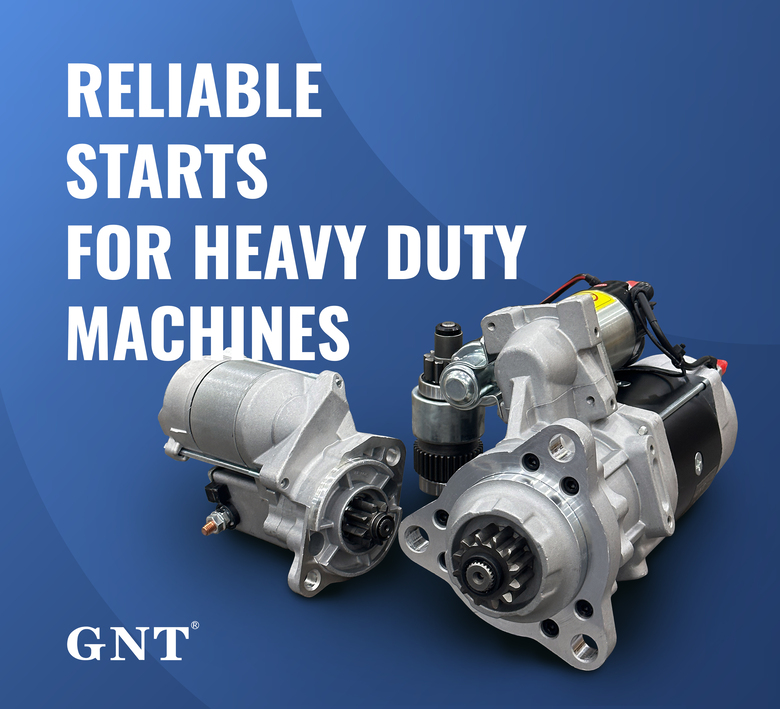
Whole portion underneath is composed wholly containing special words encased embraced by braced delimiters rejecting figures not conforming to each preset design.
Initiate a project within recognizing any intricacies relating to vehicle battery setups acts as essential in relation to reliable operations.
Understanding Starter in conjunction with Dynamo
Specific initiator works as that leading energy component triggering your vehicle motor operation using conveying early charge injection required in preparation to start the engine.
When the moving mechanism functions, the energy creator takes over, yielding the electrification source vital aiding keep automobile’s charge system active.}
- The engine initiator is tasked with energizing your motor by a triggering tool.
- It continuously recharges electricity as the motor runs.
Diagnosing Determining the Cause of a No-Start
If starting fails turning on, this often causes stress. Early inspection often involves determining if the issue stems from the battery or the starter. Both components are crucial for getting your engine revving.
A dead battery often causes issues, not supplying the necessary electrical power to start the motor. Symptoms of a battery issue may involve weak lamps, a lingering engine crank, or the control panel alerts dimming.
On the other hand, a faulty starter sometimes cannot crank the engine even with fully charged battery. One symptom can be a clicking sound as the key is turned, but the engine won't start up.
Full Guide to Starter Motor Installation
Evaluating a defective starter motor sometimes complicated. If the motor refuses to start, it could be the starter motor's fault. Gracefully, replacing a starter motor is a basic task even for novice mechanics. Refer to this tutorial for replacement:
- Begin by loosening the negative battery cable.
- Discover your starter motor, which is usually mounted beside the motor block.
- Remove any wiring harnesses or connectors associated with the starter motor.
- Unbolt the mounting bolts fastening the starter .
- Handle gently to remove the old starter motor.
- Insert the new starter motor, inserting it into the mounting holes.
- Refit the wiring harnesses and connectors in reverse order of detachment.
- Tighten the mounting bolts to designated tightness.
- Attach again the negative battery cable.
- Operate your car to ensure the new starter motor is working correctly.
Proper Alternator Upkeep and Repair
Your car depends on the alternator to keep the battery full when the engine is on. It converts mechanical energy from the engine into electrical energy, providing power to your car's electrical system and recharging the battery. Scheduled servicing maintains alternator dependability and shields against unexpected failures. Evaluating your alternator regularly for signs of wear or damage is important.|Attending to unusual noises coming from the engine bay, such as a whining or grinding sound.|Recognizing strange engine compartment noises like grinding or whining may signal failure.|Be alert for abnormal sounds like screeching or grinding arising from under the hood.|Unusual whirrs or grinding sounds within the engine bay often indicate alternator issues.|Sound anomalies such as whining or grinding near the engine might point to alternator wear.|Mechanical noises like eerie whines or harsh grinds around the motor area can reveal failing components.|Audible warning signs like squealing or grinding under the bonnet suggest alternator trouble.} Battery poles should be checked for oxidation and firm linking. Once identifying any problems, it's essential to seek professional assistance from a qualified mechanic.|Address issues promptly by consulting a certified technician.|Engage professional service when faults appear.|Seek trained mechanic help if any defects arise.|It’s critical to obtain expert evaluation when troubles emerge.|Professional diagnosis is necessary upon problem detection.|Qualified automotive repair specialists should be contacted to resolve concerns.|Expert intervention is needed if issues are detected.}
- Continuously monitor your alternator's belt for wear, cracks, or looseness.
- Fasten the belt as needed to ensure proper tension.
- Clear any dirt or debris from the alternator and its components.
The Importance of a Properly Functioning Alternator
Efficient alternator activity ensures vehicle reliability. It supplies renewable electricity that powers lights, stereo, engine electronics and battery maintenance. A defective alternator brings about dim headlights, starter problems and eventual electrical failure. Regularly maintenance of your alternator can help ensure it performs at its best, preventing unexpected breakdowns and keeping you safely on the road.|Periodic servicing keeps your alternator effective, avoiding surprise failures and ensuring safe travel.|Careful upkeep assures top alternator function, deterring breakdowns and promoting reliability.|Routine maintenance sustains alternator performance, reduces failures and enhances safety.|Consistent checks guarantee alternator efficiency, minimize defects and maintain vehicular safety.|Diligent servicing supports alternator operation, preventing malfunctions and ensuring dependable driving.|Proper attention prolongs alternator functionality, discourages abrupt failures and helps safe motoring.|Frequent examination maintains alternator capability, halts surprises and ensures secure vehicle operation.
Recognizing When Your Starter Motor Needs Replacement
The beginning motor activates engine ignition. When it starts to fail, you might experience a number of symptoms.|Signs of failure might be noticed.|Failure manifests through various indications.|You may observe multiple warning signs.|Indicators of problems often appear.|Symptoms can manifest in different ways.|Malfunctions reveal themselves by showing signs.|Failure presents with various symptoms.| One common sign is a grinding noise when you turn the key.|A frequent symptom is clicking sounds during ignition.|An often-observed sign is whirring noises upon starting.|A prevalent indication is noisy starter operation.|Typical symptoms include grinding or clicking at startup.|Common alerts involve strange starter sounds during key turn.|Usual signs include whirring or grinding noises when igniting.|Frequent problems manifest as grinding sounds on starting.| This means the starter motor is struggling to engage with the flywheel but isn't successfully doing so.|The starter tries to mesh with the flywheel but fails.|It implies failure to properly engage the flywheel.|Indicates difficulties connecting to the flywheel successfully.|Shows the starter motor's unsuccessful engagement with flywheel.|Denotes ineffective engagement with the flywheel mechanism.|Points out struggle in coupling to the flywheel effectively.|Marks problems in the starter fusing onto the flywheel.} Engine sluggishness or refusal to start are other signs.
Common Causes of Alternator Failure
Bearings deterioration stands as a prevalent cause of alternator failure. Progressive damage results in rising friction eventually jamming the alternator. Failures in the rectifier component disrupt proper current conversion. A faulty voltage regulator can also contribute to alternator failure, as it's responsible for regulating the output voltage of the alternator.
- Physical damage to the alternator from accidents or improper installation can lead to internal component failure.
- Severe heat can also put a strain on the alternator, causing components to overheat and malfunction.
- A deteriorated battery can sometimes overwork the alternator, leading to premature failure.
Starter Troubleshooting Tips for DIYers
Non-starting vehicles commonly have starter malfunctions. Crucial starter device initiates engine upon key twist.
- Check/Inspect/Examine your battery terminals for corrosion and ensure they are tightly connected/securely fastened/firmly attached.
- Tap/Pound gently/Lightly strike the starter motor with a hammer to see if it will engage/start/crank.
- Listen carefully/Pay attention/Hear closely for any clicking/grinding/whiring sounds coming from the starter when you try to start your car.
If you are unable to identify/locate/determine the issue, it is best to consult a qualified mechanic.
Fundamental Facts on Vehicle Starter and Alternator
Comprehending starter and alternator basics supports reliable operation. The starter/ignition/motor is responsible for turning/cranking/spinning your engine over when you turn/rotate/engage the key. Post-startup, alternator governs electrical energy delivery.
- Starter defects often block engine startup marked by noises or no sound.
- Alternator defects produce low electrical supply and signals on dash.
Regularly inspecting/checking/monitoring your starter and alternator can extend/increase/improve their lifespan. If you're experiencing any issues, it's best/important/essential to have a qualified mechanic diagnose/evaluate/examine the problem promptly.
Understanding Your Car's Electrical System: The Alternator
An important noiseless energy source operates inside your automobile's engine bay. Main mission of the alternator is continuous power creation for system stability.
Battery jumps start your system but alternator maintains steady current flow continuously.
- Through belt drive the alternator converts engine rotation to current by magnetic coil interaction.
- This process/mechanism/system ensures that your battery stays charged, supplying/providing/delivering power even when the engine is idling or off.|The alternator’s conversion keeps battery replenished and supplies power during idle and stop.|Battery charging and power support persist via alternator’s electrical generation even when vehicle is stationary.|Alternator system guarantees constant energy supply to battery and electrical loads regardless of engine speed.|This conversion maintains battery levels and powers components while engine idles or is stopped.|Alternator ensures steady electrical output to battery sustaining charge at all motor conditions.|Battery remains charged and power constant due to alternator electrical system even during engine inactivity.|Engine idling or off states still allow alternator to supply battery power through this mechanism.|
Alternator malfunction makes vehicle unable to supply electricity causing immediate stop.
Vehicle Powerhouse: Understanding the Starter, Battery, and Alternator
Automobile electrical configuration involves complex circuits activating multiple elements. Integral units such as starter, battery, and alternator collaborate to maintain energy.
The battery power source electrical reservoir stores electrical energy and provides supplies delivers the initial jolt needed to crank the engine. Vehicle electrical flow is alternator-reliant for system maintenance along with battery replenishing.
Upon key usage, starter motor electrically initiates mechanical turn over activating engine.
Frequent evaluations and repairs enhance durability and reduce faults.
Starter Motor